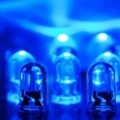New research shows that light can affect moods negatively as well as positively.
Alison Jing Xu, assistant professor of management at the University of Toronto Scarborough and the Rotman School of Management in Canada, along with Apama Labroo of Northwestern University in the US have conducted new research into the science and psychology of light.
Our bodies associate light with heat which apparently, intensifies our emotions whether they’re positive or negative. Bright light enhances a perception of warmth and therefore emotional response even if there is no change in temperature. To test this, Xu and Labroo ran six tests. One looked at whether people do associate light with heat and it was proved that they do. Other experiments were conducted around the impact a brighter room has on the other senses. People in brighter rooms reported a preference for spicy food and were more likely to report their behaviour as aggressive.
Other experiments tested the premise of emotions intensifying by asking participants to report their feelings towards negative ones. This found that brightness increased positive views toward positive items but lowered them towards negative ones. This was then repeated and the participants were made aware that their decisions may be influenced by the levels of brightness and emotional response may be deeply rooted into our psychological make up. This would suggest people are unable to alter how they feel in brightly lit environment, even if they wanted to.
Specific environment could benefit from the findings. Workplaces could use light to help get rid of negative feelings and improve the mood of staff. Restaurants serving spicy foods could use a brighter lighting scheme. Places such as pubs could consider dimming their lights and certain time to try to stop aggressive behaviour.
Another experiment, involved giving the participants two drinks, one which tastes nice and another that doesn’t. Those in a brighter environment drank more of the pleasant drink than people in the darker setting but less of the unpleasant one, supporting that moods are intensified in a brighter light. This could suggest outlets selling popular drinks do better in more brightly lit environment whereas drinks which seem less pleasant may be better suited to darker settings.
The report said:
From a policy perspective these findings suggest a simple way to nudge people into being less emotional, by simply turning the lights down. On the other hand, for those wanting to sway opinions with passionate claims, or those desiring swift action to overcome procrastinations, turning on the lights may be the best.
Xu said:
Marketers may adjust the lighting levels in the retail environment according to the nature of the products on sale. If you are selling emotionally expressive products such as flowers or engagement rings it would make sense to make the store as bright as possible.




